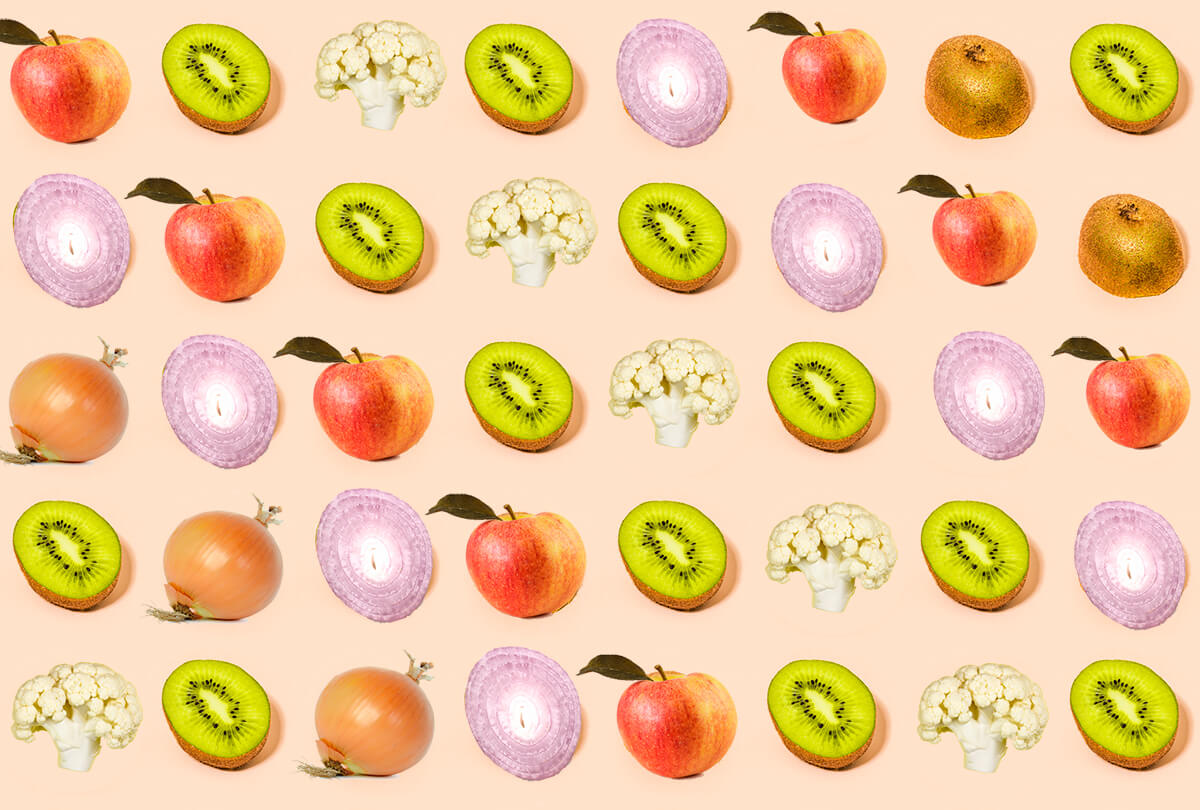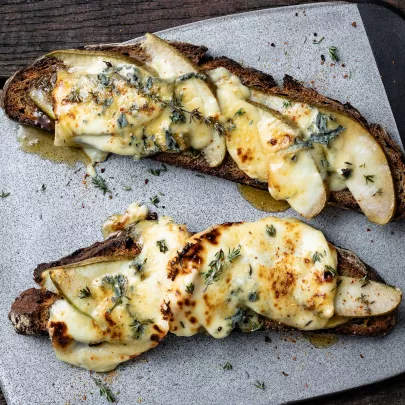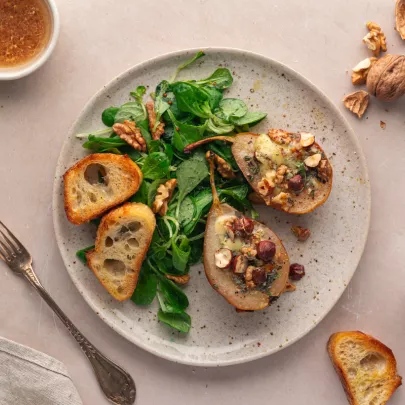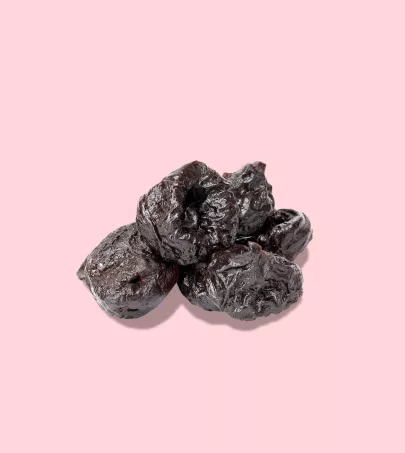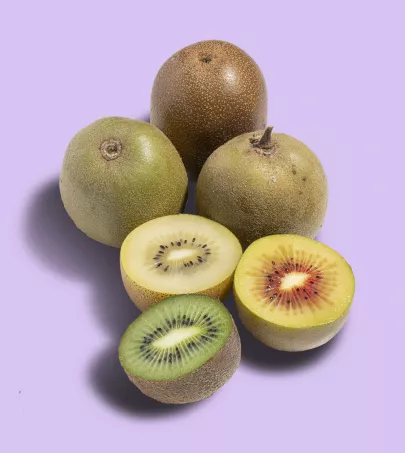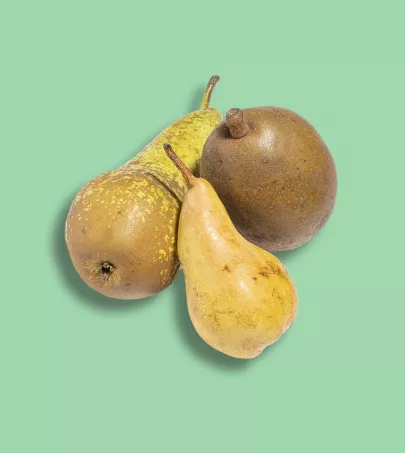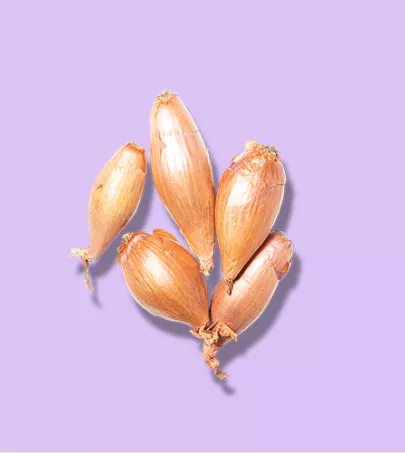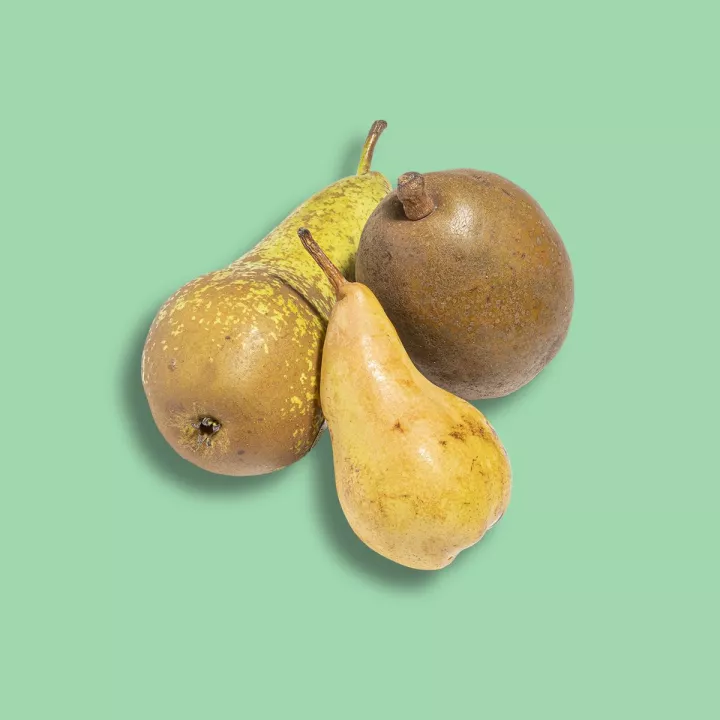
French Pear
Provence-Alpes-Côte d'Azur
From Williams to Guyot, Beurré Hardy, Comice, Passe-Crassane and Conférence, there are hundreds of varieties of this oblong fruit with a rotund base. Which is why it’s found in stores almost year round. Better still, as this fruit has been grown for over 6,000 years, there are literally thousands of tasty ways to enjoy it.
What you need to know
Although pear pips have been found on sites dating back to the Neolithic period, they were probably first cultivated in China, 4,000 years before the modern era! Since then, time has worked its wonders, improving both growing practices and the fruit itself. Today in France, on rich, humid and well-drained soils, pollinated pear trees – which can grow as high as 65 feet and live for two centuries – produce Comic, Guyot, Louise-Bonne d’Avranches and other varieties, which are harvested before they ripen. Why? Because the pears develop a mealy texture if they mature on the tree. They also become extremely fragile when ripe. After picking, the fruit is cold-stored until they develop the optimal look and taste for the market.
Characteristics
Smell
Look
Touch
Taste
Nutritional benefits
Like many other fruits, pears contain plenty of carbohydrates and water, and are also fairly rich in fiber.
Editor's note
How to use
Conservation
Several days at room temperature – never in the fridge!
Préparation
After peeling and cutting, pear flesh tends to oxidize and darken, which you can prevent with a dash of lemon.
Utilisation
Pears are delicious with game and poultry or in dishes made from heirloom vegetables. They can also be used in countless sweet dishes, from the celebrated Bourdaloue pie to Poire Belle Hélène and classics such as Tatin caramelized pear tart, clafoutis, charlotte bread pudding, fruit salads, stewed fruit and jellies.
Pair with
Foie gras, duck, Roquefort cheese, honey, chocolate, toffee, almonds and more, helped down with a close cousin: Domfront sparkling pear cider.


